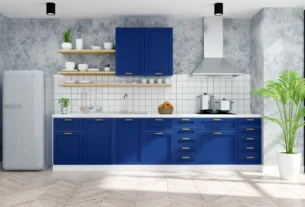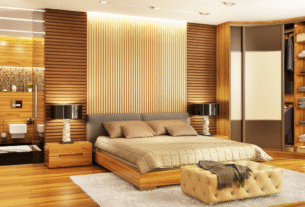In India, building a home is not merely a physical process—it is an emotional and spiritual journey. Among the guiding principles for home design and layout, Vastu Shastra holds a timeless place. Rooted in ancient Indian knowledge, Vastu for home is more than just superstition. It is a science of architecture that aligns the five elements—earth, water, fire, air, and space—with your living environment to bring harmony, prosperity, and well-being.
With rising awareness in 2025, both urban and rural homeowners are keen to incorporate Vastu from the foundation to final interiors. This article serves as a complete Vastu guide for Indian homes, covering all essential aspects including entrance, kitchen, bedrooms, toilets, pooja room, staircase, layout planning, common Vastu doshas, and practical remedies.
Vastu for Home: Why It Matters Today
Vastu Shastra is not about rigid rules. Rather, it offers flexible principles that help optimize energy flow in your home. Proper Vastu alignment is believed to enhance positivity, financial growth, relationships, mental peace, and even health. In 2025, as modern home design increasingly fuses tradition with technology, the relevance of Vastu remains unshaken.
Whether you’re building a new home, buying an apartment, or renovating your current space, understanding Vastu for home can be a vital tool for holistic well-being.
Ideal Vastu Direction for Main Entrance
The main entrance is considered the “mouth of the house” and governs the energy that flows into your living space. A well-placed entrance sets the tone for positivity.
The most auspicious directions for the main door are North-East (Ishan), East (Purva), and North (Uttara). These directions allow maximum morning sunlight and promote vibrant energy. South, South-West, or North-West entrances may bring challenges unless remedied.
Ensure the door opens inward, is larger than other doors, and is well-lit. Avoid clutter or shoe racks directly outside the entrance. Using wooden or metal nameplates, fresh plants, and threshold designs enhances energy flow and invites prosperity.
Bedroom Vastu: Creating a Peaceful Sanctuary
The bedroom is where you rest, heal, and recharge. The master bedroom should ideally be in the South-West corner of the home, which is the direction of stability and strength. For children’s bedrooms, the West or North-West are preferable, while the North-East should be avoided for sleeping spaces as it can lead to health and emotional issues.
The bed should be placed so that your head faces South or East while sleeping. Avoid mirrors directly facing the bed and avoid placing the bed under exposed beams. Electronic devices should be minimized, and lighting should be soft and calming.
In 2025, as smart lighting and automation become common, it’s easy to customize the bedroom environment to align with both comfort and Vastu.
Kitchen Vastu: Direction of Fire
The kitchen is the source of nourishment and should ideally be located in the South-East direction, governed by the fire element (Agni). If this is not possible, the North-West direction is the next best option.
The gas stove should face the East, ensuring the cook faces East while preparing food. The sink, representing water, should be placed far from the stove, preferably in the North-East. Avoid kitchens directly under or above toilets or bedrooms, as this disrupts the energy flow.
Storage for grains and spices should be placed in the South or West walls, promoting abundance. In 2025, modular kitchens can easily accommodate these layouts while ensuring style and efficiency.
Toilet and Bathroom Vastu
Toilets and bathrooms are essential but can act as negative energy zones if not properly placed. The best location for a toilet is in the North-West or West direction. The South-West and North-East are strictly avoided for bathrooms, as they disrupt stability and mental peace.
The toilet seat should face North or South, and the door should not directly face the kitchen or pooja room. Always keep bathroom doors closed, and ventilate the area properly. In multi-bathroom homes, ensure no toilet shares a wall with the pooja room or bedroom headboard.
In modern homes, exhaust fans, air purifiers, and natural plants are effective Vastu remedies for bathroom energy balancing.
Living Room Vastu: The Heart of the Home
The living room is where families bond and guests are welcomed. It should ideally be located in the North, East, or North-East part of the home. This ensures ample natural light and positive vibrations.
The main seating or sofa should be placed in the South or West, with the host facing East or North when seated. Avoid beams running across the ceiling, and opt for soft lighting and pleasant colors like light yellow, white, beige, or light green.
Electronics like the TV should be placed in the South-East, and decorative items like paintings or water features should be placed in the North or North-East to stimulate positivity.
Pooja Room Vastu: Channeling Divine Energy
The pooja room holds sacred energy and is best placed in the North-East (Ishan Kon), the holiest direction according to Vastu. This corner is considered the zone of divine energies and enlightenment.
Ensure the idols face West or East, so that devotees face East or West while praying. The pooja room should be elevated slightly from the rest of the house and never be located below staircases or adjacent to bathrooms.
Use natural materials like wood or marble for the mandir, and incorporate soft, diffused lighting. In 2025, many Indian homes are integrating dedicated pooja niches within living rooms or using compact temple units with proper orientation.
Balcony and Open Spaces
Balconies and terraces are ideal in the North, East, or North-East, which are directions of light and fresh air. Avoid balconies in the South-West, as they may disturb the structural and energetic stability of the home.
Use green plants, hanging bells, and open seating to maximize Vastu benefits. Keep the area clutter-free and ensure rainwater does not accumulate, as stagnant water is considered a source of negative energy.
Staircase Placement According to Vastu
The ideal location for staircases is the South, South-West, or West. Staircases should turn clockwise while ascending. Avoid staircases in the North-East, as it may suppress positive energy flow and lead to health issues.
The number of stairs should ideally be odd (like 9, 15, 21). Spiral staircases are generally discouraged, and staircases should not be directly in front of the main entrance. Use earthy shades like brown or off-white for staircase walls, and avoid placing puja rooms or water tanks below the staircase.
Complete Vastu Layout Planning for Home
A Vastu-compliant layout balances all five elements and directions. The central zone (Brahmasthan) should ideally be left open or minimally loaded. Here’s a simplified directional layout for different functions:
- North-East: Pooja Room, Meditation Area
- East: Living Room, Windows
- South-East: Kitchen, Electricals
- South: Master Bedroom
- South-West: Staircase or Storage
- West: Children’s Room, Dining
- North-West: Guest Bedroom, Toilet
- North: Entrance or Study Room
Even in apartments where layouts are fixed, Vastu can be applied to interiors and furniture placements to align energy zones effectively.
Common Vastu Dosh (Defects) in Homes
Despite best intentions, many homes end up with Vastu defects either due to site limitations or incorrect design choices. Some common Vastu dosh include:
- Main door facing South or South-West
- Toilets in the North-East
- Kitchen adjacent to toilet
- Staircase in Brahmasthan (center)
- Mirrors facing the bed
- Pooja room next to bathroom
While these may not always be structurally correctable, Vastu remedies can help neutralize their effects.
Practical Vastu Remedies for Home
Not all Vastu issues require demolition or rebuilding. There are effective remedies to correct energy imbalances without structural changes:
- Use of Mirrors: Strategically placed mirrors can redirect energy. Never place them opposite the bed or pooja room.
- Copper Swastik or Vastu Pyramid: Installing these in problematic zones like South-West corners or main doors can improve stability and financial strength.
- Crystals and Gemstones: Energized crystals can correct dosh in specific directions.
- Colors and Elements: Introducing color therapy in curtains, walls, or furnishings based on direction can influence energy flow positively.
- Salt and Camphor: Placing bowls of salt in bathrooms or corners absorbs negativity. Camphor is also used to purify air and uplift vibrations.
- Vastu Paintings: Art depicting sunrise, waterfalls, or mountain peaks in North-East or East walls brings prosperity.
Vastu Painting that brings good luck to your home.
Always consult a Vastu expert for dosh remedies based on your unique floor plan and energy assessment.
Modern Vastu Meets Contemporary Living
In 2025, Indian homeowners are finding ways to blend tradition with innovation. Vastu no longer restricts creativity—it enhances it. Architects now collaborate with Vastu consultants to design energy-aligned, aesthetically stunning homes.
Smart home technology, too, is being integrated in Vastu-friendly ways. For instance, lighting that simulates sunrise in the East corner helps energize mornings, while smart thermostats maintain ideal fire-element zones in kitchens.
Even real estate developers are now marketing Vastu-compliant flats and villas, especially in cities like Noida, Bengaluru, and Pune, recognizing the growing demand among buyers.
Conclusion
Vastu for home is more relevant than ever in today’s fast-paced, stress-filled world. It’s a holistic system that nurtures balance, wellness, prosperity, and harmony. Whether you are building from scratch, buying a new flat, or just reorganizing your existing home, following Vastu principles can make a remarkable difference in your daily life.
By understanding the correct direction and placement for rooms, doors, and furniture—and applying practical remedies where needed—you can transform your house into a powerful space of positive energy. In 2025 and beyond, homes aligned with Vastu aren’t just spiritually satisfying—they are smarter, healthier, and more sustainable.
FAQs
Q1. What is the best direction for the main entrance according to Vastu?
The North-East, East, or North are the most auspicious directions for the main entrance.
Q2. Where should the kitchen be placed in a Vastu-compliant home?
Ideally in the South-East. North-West is also acceptable. Avoid placing it in North-East.
Q3. What are common Vastu defects in modern homes?
Toilets in the North-East, staircases in the center, and South-facing doors are frequent Vastu doshas.
Q4. Can Vastu defects be corrected without renovation?
Yes. Remedies like crystals, Vastu pyramids, salt bowls, and mirror placements can neutralize doshas.
Q5. Is Vastu relevant for apartments and flats?
Absolutely. Even in apartments, interior arrangement, lighting, and color schemes can be Vastu-aligned.






